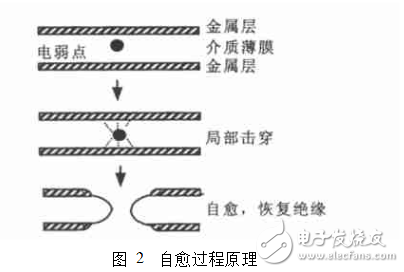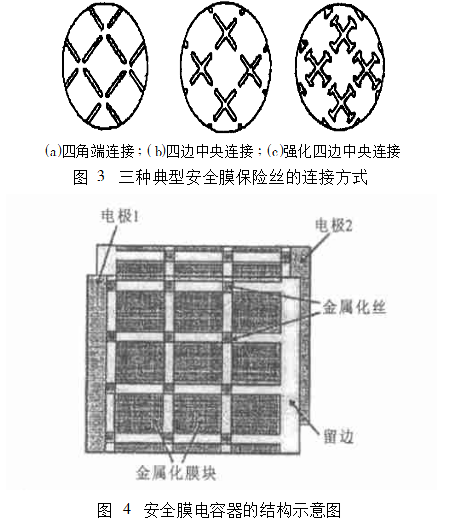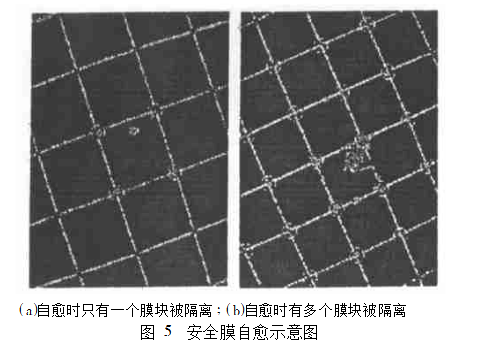Views: 15 Author: Site Editor Publish Time: 2023-02-22 Origin: Site
The pulse capacitor can store the charging energy of a small power supply to the capacitor in a long time interval, and release the stored energy quickly in a very short time interval at a certain moment of need, forming a strong inrush current and powerful impact power.
Pulse Capacitor Features
Metallized polypropylene film is used as medium, sealed with high-voltage insulating material, and insulated shell. It has excellent electrical performance, good reliability, high temperature resistance, small size, large capacity and good self-healing performance.
Pulse Capacitor Application
Pulse capacitors are used in high-voltage test devices such as impulse voltage generators, impulse current generators, and oscillation circuits.In addition, it can also be used in electromagnetic forming, electrohydraulic forming, electrohydraulic crushing, energy storage welding, seabed prospecting, and production of high-temperature plasma super impact magnetic field, strong impact light source, laser and other devices.
Research On High Energy Storage Density Pulse Capacitor
High energy storage density pulse capacitors are now widely used in pulse power supplies, medical equipment, electromagnetic weapons, particle accelerators and environmental protection.The energy storage pulse capacitor has experienced the development of paper/aluminum foil structure, paper film structure, and metallized electrode structure. Its energy storage density has risen from tens of J/L to nearly kJ/T, and laboratory samples have reached 2~3kJ/L.Every major increase in the energy storage density of capacitors is accompanied by the application of new materials or processes: the impregnating agent ranges from mineral oil for paper capacitors to rapeseed oil for metallized film capacitors;The electrode ranges from aluminum foil to the metallized vapor deposition layer to the split metallized electrode; the medium ranges from paper to paper film to full film and then to composite film.American Aerovox, Inc. and Maxwell Energy Products Inc., which are leaders in high energy storage density capacitor technology, have made research on new dielectric films the focus of developing next-generation energy storage capacitors.
Early Energy Storage Capacitors
In the 1960s, the design of energy storage pulse capacitors adopted the structure of aluminum foil/paper impregnated with mineral oil. The thickness of the paper was about 8-20 μm, usually 3-6 layers, to stagger the electrical weakness on the paper (~10 pieces/m3). Laser cutting aluminum foil is usually used to reduce the influence of electrode edge burrs; the protruding lead structure of aluminum foil is used to ensure greater flow capacity; the anti-partial discharge of the capacitor is improved by increasing the aromaticity index of the mineral oil used for impregnation ability.The energy storage density of its capacitor is ~75J/L (~50J/kg). Increasing the thickness of the dielectric can increase the working voltage of the capacitor, but the electric field intensity between the electrodes will increase accordingly, and the electric field distortion and partial discharge at the edge of the electrodes will be more serious. The working voltage of the pulse energy storage capacitor is generally <12kV. Generally, the structure with protruding inner string aluminum foil (see Figure 1) is used to increase the working voltage.

Using castor oil as an impregnating agent is a great improvement. It has the advantages of high dielectric constant (4.6) and good gas absorption and arc resistance. The disadvantage is that the high viscosity prolongs the impregnation time and the dielectric loss is large at high temperature. The energy storage density of aluminum foil/paper structure energy storage capacitors reached 400J/kg in the 1980s.
Self-healing High Energy Storage Density Capacitor
Metallization evaporation technology was applied to energy storage capacitors in the 1970s. The electrode of the metallized film capacitor is composed of a very thin layer of metal (usually aluminum or zinc aluminum) evaporated on the organic film, and its thickness is only 20-100nm. The defects or impurities existing in the film during the production process, where the electrical strength is lower than the surrounding area, are called electrical weaknesses. As the applied voltage increases, the film at the electrical weak point is first broken down to form a discharge channel, and the discharge current causes local high temperature, and the extremely thin metal at the breakdown point.
The layer is heated to evaporate rapidly, diffuse outward and restore the insulation. Because the local breakdown does not affect the entire capacitor, this process is called "self-healing" (see Figure 2 for the principle). The self-healing process is affected by factors such as the applied voltage, the capacitance of the test object, and the thickness of the metal layer, and the dissipated energy level is usually μJ to mJ. The self-healing area is usually a few mm2 ~ cm2, and the capacitor can continue to work after self-healing. A small amount of gas, water, carbon and other substances generated by chemical reactions in self-healing will adversely affect some electrical parameters of the capacitor such as insulation resistance and dielectric loss, but unless a large area of self-healing occurs, it is usually very weak, when the metallized film capacitor is working, its capacitance will gradually decrease, and after a decrease of 5%, the rate of decline will increase sharply and the insulation resistance of the capacitor will decrease sharply. Therefore, the capacitance drop of 5% is used as an indicator of the end of the capacitor's life.

The metallized film capacitor effectively prevents the failure of the capacitor caused by a single electrical weakness, greatly prolongs the service life, and the reduction of the electrode volume/weight also greatly improves the energy storage density. However, the thin electrode structure and the gold-sprayed connection form at the end limit the flow capacity, so it cannot be applied to the field of high-current steep pulse discharge (ns-μs level). Thickening the electrode edge and improving the gold spraying at the end can improve the flow capacity of the end. Metallized film capacitors have been widely used in the field of slow pulse discharge (ms level) in recent years,such as medical pacemakers and electromagnetic launch weapons, etc.
In addition to polypropylene film, film materials such as polyester, polycarbonate, and polyvinylidene fluoride are also used in metallized capacitors. In particular, the dielectric constant of the polyvinylidene fluoride film reaches 11, which can make the energy storage density of the capacitor reach a very high level. But it is a strong polar medium, the dielectric constant changes greatly with the frequency, the capacitor discharge efficiency is relatively low, and the cost is high. Therefore, polyvinylidene fluoride capacitors are only used in special fields such as military electromagnetic launch weapons.
Maxwell, Averovox and ABB are at the leading level in the research, development and production of metallized film capacitors with high energy storage density. Maxwell provided the 52MJ self-healing capacitor bank for the US military in 1991. The parameters of a single capacitor are 206μF, 24kV, 50kJ, the energy storage density is 930J/L, and the design life is 5000 times of charging and discharging. The energy storage density of the KM metallized Kraft paper capacitor researched by Averovox and the Livemore National Laboratory of the United States for the National Ignition Device of the United States is 770J/L, and the energy storage density of the metallized polypropylene film capacitor is 850J/L. The CM type metallized film capacitor provided by Maxwell for NIF has an energy storage density of 840J/L and a lifespan of >20,000 times.
Development Trend
With the in-depth research on the breakdown mechanism of polymers and the self-healing mechanism of metallized electrodes, some new materials and processes have been or gradually applied to the field of capacitors.
Split Electrode Metallized Film
The application of the split electrode metallized film greatly extends the concept of self-healing and provides secondary protection for the capacitor, so it is called a safety film. The safety film is made by block evaporation and non-uniform evaporation technology. It is composed of countless divided film blocks, and the different film blocks are only connected by very thin evaporation metal wires (see Figure 3).A safety film capacitor structure is shown in Figure 4. When a breakdown occurs in a film block, the breakdown point will self-heal;The charge in the unbroken film block flows to the broken film block through the metal wire, and the metal wire is instantly evaporated by the high current, thus cutting off the electrical connection between the breakdown film block and the surrounding area, realizing secondary protection and ensuring good self-healing of the capacitor (See Figure 5). The application of the safety film overcomes the defect that the self-healing part of ordinary metallized film capacitors is prone to secondary breakdown, and enables the energy storage medium to work close to its limit field strength, greatly improving the energy storage density and safety performance of the capacitor.

Studies have shown that the disconnection of the metal wires of some film blocks farther away is not caused by thermal evaporation, but is caused by mechanical stress caused by the difference in thermal expansion coefficient between the film and the evaporated metal.How to choose the best metallization evaporation scheme and improve the adhesion between the evaporated metal and the base film remains to be further studied. ABB's research shows that choosing a suitable dielectric film can increase the life of the capacitor by more than 10 times, and a successful metallized electrode design can increase the life of the capacitor by more than 6 times.
Application of Composite Film
Films currently used in metallized capacitors include polypropylene, polyester, polycarbonate, polyvinylidene fluoride, etc. These materials have their own advantages and disadvantages, and their dielectric capacitor energy storage densities have reached or approached the limit value. Composite dielectric film is a new type of energy storage medium. Its principle is to compound a thin layer of dielectric material on a base film to make it have more excellent performance. Different composite materials also have different properties. Composite films such as composite ceramic films, composite PVDF films and diamond films are being developed for capacitors, all of which have excellent electrical properties. Among them, the diamond composite film is formed by evaporating a thin layer of diamond coating on the dielectric base film. It has both excellent electrical and thermal conductivity and chemical stability and has attracted much attention. Capacitors made of it are especially suitable for the field of high energy storage density. Composite film capacitors are still in the laboratory stage due to cost and other reasons.

Improved End Contact
The gold-sprayed contact at the end of the metallized electrode structure capacitor limits the application of the capacitor in many fields, especially the field of high-current steep pulse discharge. The deterioration of the contact between gold sprayed at the end and the edge of the electrode is also one of the main reasons for the failure of metallized capacitors. The deterioration of gold-sprayed contacts at the ends of high energy storage density pulse capacitors is affected by factors such as thermal effects of the discharge current, mechanical effects, and partial discharges at the edges of the electrodes. In the case of the same thermal effect, the damage of the end contact caused by the current pulse with a large peak current is relatively large.
It is effective to increase the contact surface between the gold spray and the electrode and to improve the electric field distribution at the edge of the electrode (such as using an oil-impregnated structure). The former can adopt the method of thickening the electrode edge. Averovox uses double-sided metallized polyester film as the electrode, and polypropylene film as the dielectric structure has better flow capacity and high temperature resistance at the end of the capacitor.
Similar to composite film, composite gold-sprayed materials can also improve end flow. When spraying gold, first spray a layer of low melting point metal (such as zinc or tin), because of its high resistivity, wait for it to solidify and cool, and then spray a layer of low resistivity material (such as copper). Although copper has a high melting point, it is not sprayed directly on the metallized film, thus avoiding damage to the film. An appropriate ratio of the two can greatly reduce the heating caused by the end contact and improve the flow capacity of the capacitor.
With the advancement of material science, the emergence of a large number of new dielectric materials and the improvement of technology, capacitors with an energy storage density of 2-3kJ/L are expected to be put into use.